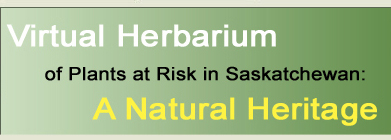
|

|

|

|

|

|

|
|
|
|
|
|
| Lactuca biennis (Moench) Fern. | Species Image Gallery (opens in a new window) |
||||||||||||||||||||||||||||||||
| TAXONOMY | |||||||||||||||||||||||||||||||||
| Family: | Asteraceae or Compositae | ||||||||||||||||||||||||||||||||
| Genus: | Lactuca | ||||||||||||||||||||||||||||||||
| Species Synonyms: | Mulgedium spicatum auct. non (Lam.) Small Mulgedium spicatum var. integrifolium (Torr. & Gray) Small Lactuca spicata var. integrifolia (Torr. & Gray) Britt. Lactuca spicata auct. non (Lam.) A.S. Hitchc. |
||||||||||||||||||||||||||||||||
| Common Names: | tall blue lettuce wild blue lettuce blue wood lettuce |
||||||||||||||||||||||||||||||||
| DISTRIBUTION | |||||||||||||||||||||||||||||||||
| Canada: | southern Yukon Territory – British Columbia – Labrador – Newfoundland – Nova Scotia | ||||||||||||||||||||||||||||||||
| Saskatchewan: | southern and central Saskatchewan | ||||||||||||||||||||||||||||||||
| Ecoregion: | Cypress Upland, Aspen Parkland, Boreal Transition, Mid-Boreal Upland, Mid-Boreal Lowland, Churchill River Upland | ||||||||||||||||||||||||||||||||
| HABITAT | |||||||||||||||||||||||||||||||||
| Saskatchewan: | moist woods and shrub thickets | ||||||||||||||||||||||||||||||||
| Associated Species: | American purple vetch, speckled alder, squashberry, veiny meadow rue, water hemlock | ||||||||||||||||||||||||||||||||
| RARITY STATUS | |||||||||||||||||||||||||||||||||
| Provincial
Status According to Harms (2003): |
Vulnerable |
||||||||||||||||||||||||||||||||
| Nature Conservancy Status: | G5 S2 |
||||||||||||||||||||||||||||||||
| Saskatchewan
Species at Risk Status: |
None |
||||||||||||||||||||||||||||||||
| COSEWIC Status: | None |
||||||||||||||||||||||||||||||||
| Tall blue lettuce is apparently secure, with numerous populations throughout the province. However, local populations are small, leaving this plant vulnerable to changes in habitat. | |||||||||||||||||||||||||||||||||
| SPECIES DESCRIPTION | |||||||||||||||||||||||||||||||||
| Height: | 1 – 2.5 m tall | ||||||||||||||||||||||||||||||||
| Roots: | taproot | ||||||||||||||||||||||||||||||||
| Stems: | to 1.5 cm wide; hairless | ||||||||||||||||||||||||||||||||
| Leaves: | basal and lower leaves sessile, base tapered to arrow-shaped, tip broadly triangular, hairs epidermal, margin toothed; middle and upper leaves with winged stalk, 10 – 25 cm long, 5 – 10 cm wide, base tapered to arrow-shaped, hairy on midvein, hairless above, margin lobed to entire, sometimes lobes are downwards pointing; upper leaves narrow, with clasping ear-like lobes, margin entire | ||||||||||||||||||||||||||||||||
| Inflorescence: | heads 50 – 100 in a cone-shaped panicle, ray flowers only; bracts ~24 in several overlapping series, black-tipped | ||||||||||||||||||||||||||||||||
| Flowers: | ray flowers 25 – 40, blue or creamy white | ||||||||||||||||||||||||||||||||
| Fruits: | achenes 3 – 5 mm long, several nerved, flattened, grey to reddish brown; beak brown, stout, to 1 mm long, or absent; pappus of capillary bristles in 3 or 4 series, short outer pappus, tawny to greyish | ||||||||||||||||||||||||||||||||
| |||||||||||||||||||||||||||||||||